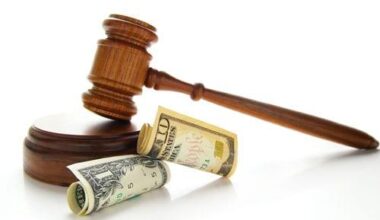If you’ve missed some mortgage payments, you may have received a notice from your lender informing you that your property is in pre-foreclosure. If you do nothing, you may lose your home permanently. While pre-foreclosure is a serious issue, there are options for regaining possession of your home. But what exactly is pre-foreclosure? Understanding what pre-foreclosure is and your alternatives while in it will help you avoid losing your house. So, let’s look at preforeclosure listings, how long the process takes, and how to negotiate for a preforeclosure.
What Is Preforeclosure?
Pre-foreclosure is the initial stage of a legal action that might result in the repossession of a property by a delinquent borrower. Because the borrowing owner exceeds the contractual terms for missed payments, the lender issues a notice of default on the property in pre-foreclosure.
A notice of default advises the borrower that the lender is taking legal proceedings to foreclose on the loan. Borrowers who find themselves in pre-foreclosure have a few choices. Lenders may even be prepared to negotiate with them in order to prevent going into foreclosure.
How Does Pre-Foreclosure Work?
The pre-foreclosure process consists of several phases that begin when you fail to make your monthly payments. When you take out a mortgage and purchase a property, you agree to make monthly payments against the loan balance. If you miss payments and the properties go into foreclosure, you are breaking your agreement with your lender.
#1. Default
If you miss three (3) payments in a row, you will be in default. For lenders, however, the foreclosure process is extremely costly. Lenders will usually work with homeowners to reduce payments, defer payments, or restructure the loan. If a homeowner requires further assistance with their mortgage payments, foreclosure mediation is one alternative.
#2. Notice of Default
A notice of default is issued after three to six months of missed payments and no sign of redemption. This is a written notice from the lender that legal action will be taken if the debt is not paid. The lender will also file a lawsuit with the court or issue a public notice to the county recorder’s office. This officially kicks off the pre-foreclosure process, which can run anywhere from three to ten months.
#3. Auction
The bank’s purpose is to recover the money due on the property. If you continue to miss payments and do not take action to fix the situation, your home will be auctioned or sold at a trustee sale. Auctions begin with a minimum bid of the loan balance. The foreclosed house is auctioned off to the highest bidder.
Preforeclosure Listings
Buying a foreclosed home is a smart approach to getting a good price on an investment property. But you have to know where to search to uncover that diamond in the rough before another investor does.
While there are a number of paid sites available to assist you in locating preforeclosure listings, there are also numerous free resources available. Here are a few basic methods for finding free preforeclosure listings.
#1. Purchase preforeclosure leads online
Buying preforeclosure leads online is one of the simplest ways to buy a house in foreclosure. Some lead sources can automatically send new leads to your email every day, allowing you to begin marketing to leads right away rather than spending hours or even days searching for the lead before making contact.
#2. The regional multiple listing service
The Multiple Listing Service (MLS) is an obvious location to start looking for and creating real estate leads. The Multiple Listing Service (MLS) is a local database of homes for sale that is only accessible to real estate professionals. The most dependable source of data is frequently your local MLS, which can help you identify live foreclosure and preforeclosure listings as well as thorough property information.
#3. Online directories
Online directories include a wealth of information about homes in your area, which can assist you in locating foreclosure and preforeclosure listings. Filtering tools are also available in directories, making it easy to browse through prospective listings and identify the most relevant information.
#4. Public Records
Preforeclosure listings can be discovered for free at your county recorder’s office or online in the public records area. Look for a Notice of Default, a Lis Pendens, or a Notice of Sale. During the foreclosure process, these notices are issued to the homeowner and publicly recorded.
#5. Newspapers in your area
Local newspapers publicize the addresses of homes in various stages of foreclosure. When the preforeclosure process begins, the homeowner will get foreclosure notices, such as “Lis Pendens,” which are also published in the legal section of the newspaper.
#6. Attorneys and real estate brokers
There are several methods for locating preforeclosure listings without having to manually search through data and properties. Instead of manually looking through data, you can build valuable contacts with specialist professionals, such as real estate attorneys and wholesalers, who are constantly in contact with preforeclosure prospects.
Preforeclosure listings can be located through a variety of sources, including the MLS, web directories, real estate referrals, and public records. Although it is more work than a regular property listing, there is the opportunity to make a lot of money, stand out from the competitors, and specialize in a specific sector of real estate.
How Long is the Preforeclosure Process?
The preforeclosure process in New York lasts at least 120 days. Lenders will issue the borrower a notice of default 30 days after the late payment. Then, under California law, lenders must wait 90 days after the initial notification before filing a foreclosure lawsuit in court.
After waiting a minimum of 90 days, the lender will file a foreclosure lawsuit in court. The foreclosure process begins with the filing of the foreclosure complaint.
Following the filing of the complaint, the borrower will have a certain length of time to react to the complaint and explain why foreclosure is not appropriate. If the borrower does not respond to the complaint, the court may enter a default judgment against the borrower, allowing the lender to complete the foreclosure and commence the foreclosure auction or sale process.
How long does a house remain in pre-foreclosure status? Technically, the residence remains in the preforeclosure process until the lender files official foreclosure documents with the court. This implies that you can still preserve your house from pre-foreclosure up until the lender initiates formal foreclosure procedures in court. How long can a property be in pre-foreclosure? The preforeclosure process typically lasts 120 days, although it can be extended if the lender files the foreclosure complaint after the necessary 120-day waiting period.
Related: DIAMOND EQUITY INVESTMENTS: 2023 Reviews
What Should You Do If Your House Is In Preforeclosure?
If your house goes into pre-foreclosure, you have a few options.
#1. Consider modifying or refinancing your debt.
Homeowners who have created equity in their houses or whose properties have increased in value significantly since purchase have options, especially if they begin the refinancing process before missing a payment. It’s just another reason why you should contact your lender as soon as feasible.
A loan modification is another option for those who are already on the verge of foreclosure. It is essentially a rewriting of a homeowner’s existing mortgage sans the closing charges. This option will most certainly lengthen the life of your loan, but by spreading out the payments over a longer period of time, it will also provide you with more affordable installments.
#2. Consider a short sale.
You can also sell your house during the preforeclosure process. If you are in pre-foreclosure, most lenders will accept a short sale. In a short sale, the buyer pays less than the mortgage debt. Banks agree to this because it saves them the time and money associated with the foreclosure.
#3. Purchase a deed in lieu of foreclosure.
Another option is to surrender your ownership rights to the lender via a deed in lieu of foreclosure. The owner vacates the property once the deed is signed. In exchange, the lender is free to sell the property right away. In some situations, the lender can still seek compensation from the homeowner for any losses on the sale, so borrowers should inquire about the lender’s rules before signing away their rights. People who want to avoid a lengthy foreclosure process and a significant blow to their credit score may find this alternative appealing.
#4. Borrow if possible to make up for missed payments.
Borrowers who dislike asking for help will find asking friends and family for a loan distasteful, but the best approach to get out of preforeclosure is to make up on all missing payments. Many lenders will terminate the preforeclosure process once the mortgage is brought current.
It may be difficult, but if borrowing is possible, it is preferable to do so before the foreclosure process begins to minimize the impact on your credit history.
How To Negotiate a Preforeclosure
Some pre-foreclosure homeowners may attempt to sell their property as a short sale, which takes them out from under the loan but compels them to accept less than they owe on their mortgage. This allows the troubled homeowner to avoid foreclosure without incurring the cost of marketing the home for sale.
Homes for sale in pre-foreclosure may pose a problem to buyers. Many pre-foreclosure homes are not posted for sale, but they may still be identified and a successful purchase offer made. The ability to locate and negotiate desirable preforeclosure homes, as well as the diplomatic skills to navigate the transaction, are required for a successful purchase of an unlisted pre-foreclosure property.
When a potential buyer views a pre-foreclosure home, it may have fallen into disrepair, and it may take significant expenditure to restore it to ready for occupancy or resale. Even seasoned homebuyers and sellers should keep the following tips in mind when considering a pre-foreclosure purchase:
- Work with a real estate agent or mortgage broker who has experience dealing with pre-foreclosures. They can aid you in locating qualified properties, sorting through those that meet your criteria, and approaching the proprietor.
- Consider using an online service like Zillow.com to find pre-foreclosure houses in your region, but keep in mind that the homeowners listed may not be interested in selling and may even be out of pre-foreclosure by the time you contact them.
- Unless you’re willing to make a cash offer on a pre-foreclosure, seek a mortgage pre-approval to show the seller that you’re ready and able to close soon.
Conclusion
Pre-foreclosure properties can be redeemed, which is good news. Homeowners have several options for getting out of debt, and many of them do not have a negative impact on their credit scores.
If you are a pre-foreclosure homeowner or are thinking about purchasing a pre-foreclosure property, you should speak with a mortgage specialist right away. They will be able to assist you with the complexities of your circumstance and will be able to connect you with professionals to assist you along the process.
Frequently Asked Questions
How do you buy a pre-foreclosure in Arizona?
The easiest strategy to get a pre-foreclosure is to get pre-approved by a lender and show up at the sale prepared to buy right away. Auctions should be avoided. You may believe you’ve found a wonderful deal at auction, but you’ll pay the price in the end.
How do you buy a foreclosed home from the bank?
There are two methods for purchasing foreclosed properties:
- Obtain financing from a lender, such as a private bank or an insurance company. Interested purchasers can contact SPAV businesses, which help banks sell off non-performing assets, through their websites or offices.
- A government agency is holding an auction.
What are the disadvantages of buying a foreclosed home?
Cons
- You won’t be allowed to inspect the inside of the house if you buy at auction.
- You may be required to undertake costly repairs.
- The process takes longer than a standard purchasing process.
- You might be forced to evict prior occupants.
- You are purchasing the house as is.
Are foreclosure homes cheaper?
Lower prices: Foreclosed homes nearly always cost less than other homes in the region, or they are advertised below market value. This is due to the lender’s desire to get the house off their books.
Related Articles:
- Trustee Sale: How It Works and All You Need To Know
- HYPOTHECATION REAL ESTATE: How It Works
- ESTATE FOR YEARS: Another Type of Leasehold Estate
- WHAT IS AN ESTATE? A Complete Guide
- How To Find Distressed Properties: Detailed Guide
- Brownstone House: Why Are NYC Homes Called Brownhouses?
- How Much Does Popcorn Ceiling Removal Cost In 2022:| Detailed Analysis






